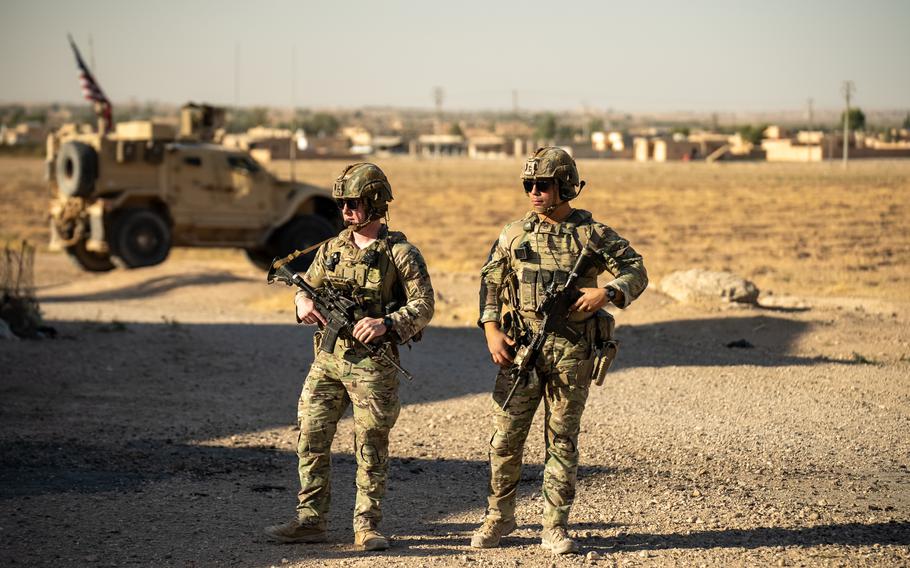
U.S. soldiers stand guard on Oct. 28, 2024, in northeast Syria. U.S. forces conducted a strike Tuesday, Nov. 26, 2024, against a militant weapons storage facility in Syria, according to U.S. Central Command. (Emma Scearce/U.S. Army)
WASHINGTON — U.S. forces in the Middle East conducted a strike Tuesday against an Iran-backed militant weapons storage facility in Syria, according to U.S. Central Command.
“We will not tolerate any attacks on our personnel and coalition partners. We are committed to taking all necessary actions to ensure their protection,” said Army Gen. Michael “Erik” Kurilla, commander of CENTCOM, which oversees military operations in the Middle East.
The strike came in response to an Iranian-backed militant attack Monday against U.S. forces in Syria. Air Force Maj. Gen. Pat Ryder, the top Pentagon spokesman, told reporters Tuesday that he was aware of an attack, but U.S. personnel were not injured and no damage occurred to base facilities.
A battle damage assessment is ongoing, though CENTCOM does not assess there were any civilian casualties. Military officials did not provide further details about the attack on the weapons storage facility.
A U.S.-led coalition in Iraq and Syria is working to prevent a resurgence of the Islamic State. About 900 U.S. service members and an undisclosed number of contractors are operating in Syria, where they support local Kurdish forces. An additional 2,500 American troops are in Iraq.
U.S. bases in the region have been prone to attacks since the surprise attack in October 2023 by Hamas militants on Israel. The Pentagon on Friday said U.S. forces had been attacked 125 times in Syria and 79 times in Iraq since the Hamas attack.
The U.S. in September announced an agreement with the Iraqi government for U.S. forces to remain in Iraq as part of a two-phased transition of the American-led mission to defeat ISIS.
The first phase will conclude the anti-ISIS coalition’s military mission in Iraq and end the deployment of coalition forces in certain locations in Iraq by September 2025. Officials have not said how many U.S. troops will remain in Iraq or where they will be stationed.
U.S. and Iraq officials agreed to allow coalition troops to continue to support anti-ISIS operations in Syria from Iraq through the second phase of the transition until at least September 2026.